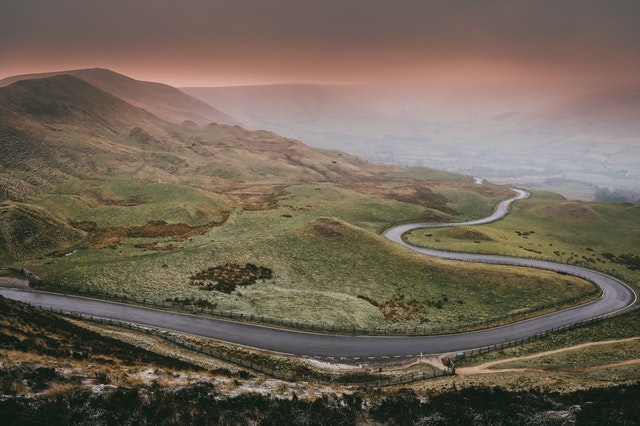| Just the Peaks
This newsletter, at a glance
|
Research shows extended-stay rentals are performing well despite coronavirus
How hospitality companies are capturing demand through Summer 2020
By now, commercial investors are well aware of the challenges facing the hospitality sector. A virus that was supposed to shut down America for a couple of weeks has spiraled into a full-blown global pandemic—with no end in sight.
But after months of sheltering in place, families are itching for a much-needed summer getaway. The problem is, most of the typical recreational activities and excursions are indefinitely cancelled. In many locations, indoor dining remains closed. Concerts are postponed. Theme park re-openings have been somewhat shaky. And compared to the usual ‘high season’ for tourism, flight paths are limited.
Clearly, the effects of COVID-19 have crippled the short-term housing market. But the pandemic has also created a perfect storm in which extended-stay properties may thrive.
Hospitality on hold?
Although long-distance travel has slowed significantly, families across the U.S.—especially on the Eastern Seaboard—are learning to improvise. During the first two months of summer, drivable vacations were all the rage. Now, extended-stay companies like AKA are cashing in big time by offering road trip packages for families looking to get away.
Unlike standard hotels that book by the day, the AKA service model features seven-day minimum stays in larger residences replete with separate sleeping areas, comfortable furnishings, full kitchens, and other home-like amenities.
“The idea here was after four months of people sheltering in place and being isolated and with the summer season upon us, we’re finding people are ready to piece together some kind of summer plan,” says AKA CMO Elana Friedman. “We’ve been able to fare better than traditional hotels, as people are living with us as a home away from home.”
The company’s extended-stay success is particularly notable in cities such as New York, Philadelphia, and Washington D.C. Families across the Northeast and Mid-Atlantic can reach these locations within hours, so it’s less a road trip—and more a ‘regional trip.’
Evens Charles, owner of Frontier Development and Hospitality in D.C., says the firm’s extended-stay offerings have stayed above 40% throughout the pandemic. Compared to nightly hotels in the area, the number is quite healthy. So, what’s the draw?
Charles says people really like the kitchen. Although they’re ready to satisfy their wanderlust, many travelers are still skittish about dining out. They’re also enjoying the roomier work space, which is great for those who bring their laptops along.
How are hotels doing?
COVID-19 edition
41.7% U.S. hotel occupancy, June 2020
73.7% U.S. hotel occupancy, June 2019
$89.09 Average nightly rate, June 2020
$119.29 Average nightly rate, June 2019
$37.15 Average nightly revenue, June 2020
$60.41 Average nightly revenue, June 2019
Stats by Smith Travel Research, reported in CREJ
It’s only temporary
With the continued threat of coronavirus, hoteliers and convention hosts have been particularly vulnerable. Tourist hotspots like D.C. have seen steep declines in occupancy—about 19% during the week ending June 20th (a 78% drop from last year). And that statistic does not include hotels that are temporarily or permanently closed due to the pandemic.
Since global visitors are nearly nonexistent, hospitality companies have had to get creative. Instead of offering a mere room, firms like AKA are pulling out all the stops in hopes of enticing regional roadtrippers. The long-stay gurus have curated an entire itinerary for guests including recommendations for COVID-19-safe excursions like golf, hiking, beach trips, park picnics, and more.
Their aptly named ‘East Coast Summer Road Trip’ package also comes with an AKA picnic blanket, water bottle, snack bag, as well as reduced parking rates—a huge plus in cities like New York and Philly. For a three-week long stay, rates start at about $4,500.
“The longer-stay model definitely did create stability for us,” Friedman reports. “The itinerary includes stops along the way. It’s about the journey, so the entire excursion is filled with excitement throughout.”
Although AKA boasts some of the largest and most luxurious long-stay buildings in existence, small boutique hotels can also capitalize on the trend. If owners and investors adopt appropriate cleaning measures, the sky’s the limit. Friedman says the firm even plans on riding the current road trip revival into the fall.
“This is an idea that can be multi-season,” she says. “We’re just launching it now.”
Coronavirus aside, have you ever wondered about America’s road trip trends? As you consider ways to implement an extended-stay model, take inspiration from today’s top-ranked Northeast road trips.
What’s there to see from point A to point B? Read on to find out.
10 Most Popular Road Trip Routes
Northeastern U.S.
- Upper Delaware River Valley, New York
Highlights: Minisink Battleground Park, Roebling’s Delaware Aqueduct
- Letchworth State Park, New York
Highlights: Letchworth Waterfall Trail, Genesee River Gorge
- The Adirondacks, New York
Highlights: Adirondack Park, Blue Mountain Lake
- The Vermont Shore, Vermont
Highlights: Lake Champlain, Mount Philo State Park
- The Mohawk Trail, Massachusetts
Highlights: Hoosac Valley Hairpin Turn, Mahican-Mohawk Trail
- The Kancamangus Highway, New Hampshire
Highlights: White Mountain National Forest, Swift River
- National Scenic Byway, Connecticut
Highlights: Roseland Cottage Woodstock, Mashamoquet Brook State Park
- Narragansett Bay, Rhode Island
Highlights: Point Judith Lighthouse, Beavertail State Park
- Coastline, Massachusetts
Highlights: Gloucester Seaport, Rockport, Plum Island
- Acadia’s Park Loop Road, Maine
Highlights: Cadillac Mountain, Coastal Atlantic
—from TripSavvy.com
Everest says: the season can still be salvaged




